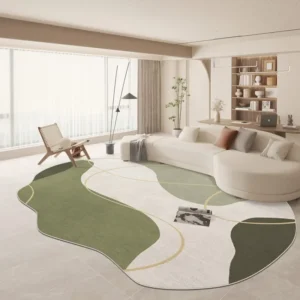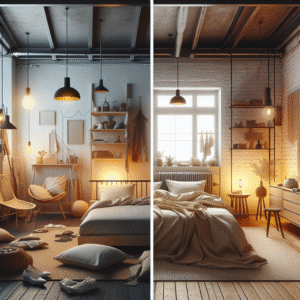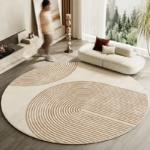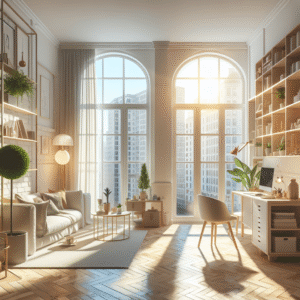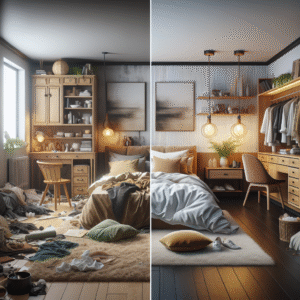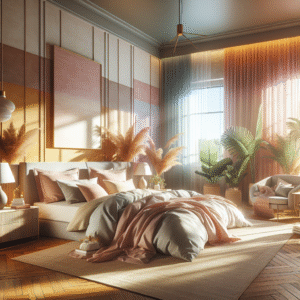Creating Screened Porch Additions For Insect Free Relaxation
Imagine a serene space where you can relax, sip your morning coffee, or host family gatherings, all while being shielded from pesky insects and harsh weather. Creating screened porch additions for insect-free relaxation not only enhances your home’s aesthetic but also creates a sanctuary just outside your door. This comprehensive guide will help you navigate the design process, from choosing the right materials to effective layout strategies, ensuring that your screening solution is functional and beautiful.
In this article, you’ll learn:
- Key benefits of screened porches
- Design options and considerations
- Installation tips for a successful project
- Maintenance best practices for long-term enjoyment
- Frequently asked questions about screened porches
Why Choose a Screened Porch? The Benefits Explained
When it comes to enhancing your outdoor living space, screened porches offer a plethora of benefits. Let’s explore some of them in detail:
Insect Protection
A screened porch creates a barrier between you and annoying bugs. Enjoy uninterrupted relaxation without swatting away flies, mosquitoes, or bees.
Weather Shielding
Screened porches allow for ventilation while protecting you from rain and strong winds, giving you usability throughout various seasons.
Outdoor Enjoyment Year-Round
Having a screened porch means you can enjoy your outdoor space regardless of the weather conditions. You can read a book, have a meal, or simply relax without getting affected by the elements.
Enhanced Home Aesthetics
These additions can be customized to complement your home’s design and architecture, adding curb appeal and increasing property value.
Design Options for Your Screened Porch Addition
Customizing your screened porch is an exciting opportunity. Here, we’ll break down some key design elements:
Size and Layout Considerations
Before construction, assess the space available for your screened porch. Common sizes vary from small nooks to expansive areas that can accommodate large gatherings. The layout should consider:
- Access points (doors, stairs)
- Comfortable seating areas
- Flow between the indoors and outdoors
Screening Materials
Choose from various screening materials, each with its benefits. Options include aluminum screens, fiberglass screens, and pet-resistant screens. Preferred selections:
- Aluminum: Durable and rust-resistant.
- Fiberglass: Flexible and resistant to corrosion.
- Pet-resistant screens: Thicker mesh to prevent pets from tearing.
Integration with Existing Structures
Aligning the screened porch with your existing home architecture is crucial. Elements to consider include rooflines, materials, and color palettes to ensure seamless integration.
Style and Decor Elements
Personalize your screened porch with decor that reflects your taste. Consider outdoor rugs, comfortable furniture, lighting options, and plants to enhance ambiance.
How to Plan Your Screened Porch Addition
Taking the leap to build a screened porch involves a strategic planning process. Here’s how to approach it effectively:
Step 1: Permits and Regulations
Before construction, check local regulations and obtain necessary permits. Consult with professionals to ensure compliance with zoning laws.
Step 2: Budgeting the Project
Establish a budget that aligns with your design goals. Factor in materials, labor, permits, and any additional fittings needed.
Step 3: Hiring Professionals vs. DIY
Decide whether to hire professionals or tackle the project yourself. Weigh the advantages:
- Hiring professionals ensures expert results.
- DIY can save costs but requires a skillset and time commitment.
Step 4: Sourcing Materials
Visit local suppliers or explore online marketplaces for your chosen materials. Compare prices and quality to ensure you get the best value.
Installing Your Screened Porch: Best Practices
Once you’ve planned, it’s time for installation. Here are some best practices to consider:
Preparation and Framing
Ensure the site is adequately cleared and prepared. Structural framing needs to be solid to support the screens and roofing materials.
Screening and Sealing
Install screening materials according to the manufacturer’s guidelines. Ensure all edges are properly sealed to prevent insects from invading.
Finishing Touches
Add your chosen decor elements last. Consider installing ceiling fans or portable heaters for added comfort in varying weather conditions.
Maintaining Your Screened Porch: Longevity Tips
To enjoy your screened porch for years, regular maintenance is essential. Follow these upkeep strategies:
Cleaning the Screens
Seasonally clean the screens using mild soap and water. This will keep them free of dust and cobwebs and maintain visibility.
Check for Damage
Regularly inspect for any tears or holes in the screens, especially after storms. Prompt repairs are critical to maintaining their integrity.
Maintaining Structural Elements
Examine framing, flooring, and other components for signs of wear. Treat wooden elements to prevent rot and damage.
Frequently Asked Questions
How much does it cost to build a screened porch?
Costs vary widely based on size, materials, and labor. Generally, expect to spend between $15,000 and $30,000. Always get multiple quotes!
Can I screen in my existing porch?
Yes! Many homeowners choose to screen in existing porches. Assess the structure’s stability and suitability for screening.
What type of flooring is best for a screened porch?
Opt for weather-resistant materials like composite decking, tiles, or treated wood designed for outdoor use.
How do I keep my screened porch warm in winter?
Consider using outdoor-rated space heaters and adding insulated curtains to retain heat during cold months.
Can I enjoy my screened porch in the rain?
Yes! The right design will allow for ventilation while providing shelter from the rain, making it a perfect retreat.
Conclusion and Next Steps
Creating screened porch additions for insect-free relaxation vastly improves your outdoor living experience. The benefits, from insect protection to aesthetic value, make this addition worthwhile for any homeowner. By following our comprehensive planning, design, and maintenance strategies, you’re well on your way to your ideal haven.
For further reading, check out our articles on outdoor living tips and home improvement guides for more insights.
Content Disclaimer
The information provided in this article is for educational purposes only. It is not professional advice; please consult experts for specific situations. Results may vary based on individual circumstances.
Categories
- Accent Walls & Ceilings (17)
- Art Curation & Gallery (32)
- Bedding Style Trends (42)
- Bedroom Makeover (37)
- Bohemian & Eclectic Styles (17)
- DIY & Budget-Friendly Decor (16)
- Eco-Friendly Design (17)
- Furniture Care (36)
- Home Decor & Design Ideas (104)
- Home Wellness Spaces (17)
- Integrated Outdoor Living (16)
- Kids and Nursery Decor (17)
- Living Room Decor (37)
- Minimalist & Japandi Style (20)
- Mix & Match Techniques (36)
- Modern & Contemporary Design (16)
- Rug Sizing & Placement (36)
- Seasonal Home Decor (39)
- Small Space Solutions (21)
- Wall Art & Painting Tips (39)
Recent Posts
Recent Comments
Archives
Product Gallery
-
 Large Area Green Rugs for Bedroom Nordic Living Room Decoration Shaped Carpet Irregular Plush Lounge Rug Home Thick Washable Mat Rated 5.00 out of 5$57.07 – $359.83Price range: $57.07 through $359.83
Large Area Green Rugs for Bedroom Nordic Living Room Decoration Shaped Carpet Irregular Plush Lounge Rug Home Thick Washable Mat Rated 5.00 out of 5$57.07 – $359.83Price range: $57.07 through $359.83 -
 Nordic Style Rugs for Bedroom Morandi Living Room Decoration Carpet Large Area Geometry Lounge Rug Home Cloakroom Non-slip Mat Rated 5.00 out of 5$40.98 – $620.81Price range: $40.98 through $620.81
Nordic Style Rugs for Bedroom Morandi Living Room Decoration Carpet Large Area Geometry Lounge Rug Home Cloakroom Non-slip Mat Rated 5.00 out of 5$40.98 – $620.81Price range: $40.98 through $620.81 -
 Irregular Shapes Living Room Decoration Carpet Modern Style Rugs for Bedroom Home Thicken Plush Rug Fluffy Soft Lounge Floor Mat Rated 4.75 out of 5$57.89 – $360.12Price range: $57.89 through $360.12
Irregular Shapes Living Room Decoration Carpet Modern Style Rugs for Bedroom Home Thicken Plush Rug Fluffy Soft Lounge Floor Mat Rated 4.75 out of 5$57.89 – $360.12Price range: $57.89 through $360.12





